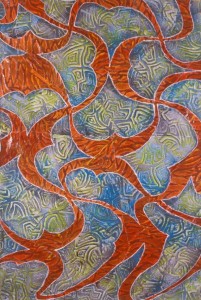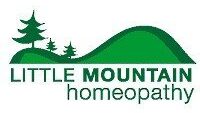
1 in 100 Canadians live with epilepsy, and 15,000 Canadians are diagnosed with epilepsy every year.
Epilepsy is a neurological disorder, affecting how the brain works, and is characterized by seizures. There are many causes of epilepsy, including physical or emotional trauma, brain tumors, poisonings or the aftermath of infection.
Homeopathic treatment does not interfere with drug therapy prescribed by an MD. It is recommended that homeopathic medications be used along with standard pharmaceutical treatments.
Case Studies of Homeopathy for Epilepsy
Dr. Von Boenninghausen has left a record of 40 cases of Epilepsy cured especially with Sulphur and Calcarea.
CASE 1:
A 2 1/2 year old boy had an eruption in the past, which had been “cured” (suppressed?) after which attacks of epilepsy came on, with stiffness of limbs, loss of consciousness and froth from the mouth. Perspiration on scalp after the attack. Further the boy had a large abdomen while his body was thin. On 17 Feb 1836 one dose of Sulphur 30 was given and after 8 days a dose of Calcarea 30 was given after which the child remained cured.
CASE 2:
A man, 40 years old, suffered from epilepsy since many years. The attacks came every 2-3 days with severe anxiety, paleness of face, sparks before the eyes and ringing in ears; severe perspiration and after that unquenchable thirst. On March 21 1836, he received a dose of Belladonna 30 dose a lighter attack came and he remained well till end of June after which two more attacks ensued. On 1st July 1836 Dr. Boenninghausen gave a dose of Sulphur 30 and a dose of Calcarea 30 after 8 days, after which the disease remained entirely cured.
CASE 3:
A lad aged 5 developed convulsions after Cholera. The fits were severe since the third day of Cholera. Symptoms were: eyes half turned, head drawn towards the left side and the hands and feet of the same side were contracted. He was given Bell, Hyos, Cina and Bryonia without effect. He was then given Cicuta-virosa which mitigated the severity of the fits; the second dose put the child to sleep and he was saved from imminent death. (Dr. Banerjee as quoted by Dr. Clarke)
CASE 4:
A girl aged 23 consulted Dr. M L Tyler for epileptic fits. Had a fall on head When she was 3 1/2 years old; in bed for four months unconscious and blind. On recovery, she had pustular rash all over the head and was “cured” (suppressed?) with ointments. Has had epileptic fits ever since with enuresis. Whole body was violently convulsed. Sleeps after fits, sometimes the whole day. Had even 20-30 fits in one night; would go with out fits for a fortnight then fits every night of the week. She was stated to be very intelligent before the fall but became mentally deficient after the fall; just like a baby at 23 and can not wash or dress herself.
Dr. Tyler prescribed Cicuta 200 on (a) violence of convulsions (b) pustular rash (Cicuta produces pustular skin eruptions mostly in head and face and repercussions on skin eruptions are felt in the bran) and (c) after effects of blow on the head.
The effect was amazing; in three weeks much better; fewer fits and could wash and dress herself; memory better. The dose acted for 6 months during which period she continued to improve. A severe fit followed after six months after a very bad cold. The second dose of Cicuta 200 was given. After initial aggravation the patient improved: started doing house work and needlework. There were mild attacks infrequently. A third dose of Cicuta 200was administered after 11 months. Patient continued to improve. Two years later another dose of Cicuta 200 was given because of several bad fits. No fits for one year since then but had few attacks after suffering from flu when another dose of Cicuta 200 was given. Had been well since. Became more articulate and was transformed into an intelligent girl. (Margaret Tyler).
CASE 5:
Dr. Geukens was consulted for treatment of a boy, aged 15, who suffered from epilepsy from 2 years of age. He was born too early by breach – feet first position, with thin umbilical cord, shortage of oxygen at birth. Child was hot tempered and even rude. Had a childish, stupid and foolish appearance. He was given various allopathic drugs without lasting effect.
Once he had a severe epileptic attack while eating probably because something got stuck in his throat. The attack began in right arm. He was lying unconscious with open eyes and did not react when spoken to (Face discoloration red convulsions, during (KR 362). After Valium he regained consciousness. When he answers he turns his eyes upward, another indication for Bufo. They turn their eyes upwards constantly. They live in their own world, dance and hit other people. The boy liked to listen to music all day long; similar to Tarentula Hispanica. The boy started masturbating early and played with his genitals (KR 701).
He can count well but his way of thinking was not fluent and mental level was that of someone in the first standard. He would start howling suddenly, again a Bufo symptom (KR 52/61). He had acne on his back with itching.
In July 1988 he was given a dose of Bufo 1 M in July 1988 based on the above indications. After one month it was observed that (a) he did not have attacks of anger anymore. His acne (Bufo is an important remedy for acne) on back disappeared. He had no further epileptic attacks and was doing well since then.
He was last seen in Sept 1993 i.e. after 5 years. (Dr. Alfons Geukens)
CASE 6:
Kathy, 5 years old, had convulsive seizures. The characteristic symptom was a violent temper tantrum before a seizure. After treating with other indicated Homoeopathic remedies without success, Dr. William Griggs prescribed Sycotic-co. After two months of regular administration (dosage and potency not indicated) the temper tantrums left her and after 4 months she had only an occasional seizure. The child was under observation for two years thereafter and she had never had another epileptic attack. (Dr. Griggs)
CASE 7:
A boy aged 10 years, suffered from epilepsy for four years. It started with fever together with swelling of the lymph nodes on the left side of throat. After allopathic treatment he was better. Later one day while studying for an examination he again had an attack. Eyeballs were turned upwards, involuntary urination during attack, salivation and foaming at the mouth and his face deviated to left side. The frequency of attacks increased despite allopathic treatment. The attacks also came during sleep around 11 pm. He used to get up frightened as if he was seeing a ghost and would gesture as if fighting the ghost. The attack would start on the left side and would later spread to the whole body. He was a hot patient and very loquacious. He was bossy with younger children but with children of his own age or elder to him he was meek. On these indications the doctor prescribed Lachesis 200 – 3 doses 12 hourly.
The boy had no attacks for 11 days but later had two attacks in one one week. Lachesis 200, 1M and 10M were given in intervals without improvement. On restudying the case the doctor discovered that the boy got frightened after seeing two horror movies which triggered off this epileptic attack. The doctor then prescribed Stramonium 200, 3 doses, 12 hourly.
The boy was relieved of the attacks and had remained free from epilepsy thereafter. He was under observation for over 5 years.
CASE 8:
A 16 years old boy was getting epileptic fits once a month, sometimes twice. Careful study of the case led to Silicea which did not help even when administered in various potencies. After being present during the attack Dr. Koppikar observed the following (1) After the recovery from first, he was intensely thirsty (2) Severe headache was persisting for hours. There was new moon aggravation. Based on what he considered as confirmed symptom of thirst after convulsions he was prescribed Cuprum-met 1M 3 doses 12 hours apart. There were no more convulsions.
CASE 9:
A 30 year old man had been having epileptic fits since 16 years of age; initially every two months but later on promptly once a month during full moon. The fit would be a severe one lasting for several hours. It came while he was asleep and not during daytime. A few days before the attack he used to feel peevish and tired after the attack. He sometimes experienced vertigo. He was prescribed Argentum-chloration – one pill to be taken four times a day.
He continued to take the pills for half an year and during that period he had only one fit. A year and half later he reported that there was no relapse.
Scientific Studies of Homeopathic Treatment for Epilepsy
Abstract
BACKGROUND: The use of complementary and alternative medicine (CAM) is popular. Parents of children suffering from epilepsy may also consider administering CAM to their children. Systematic data about frequency of and motivations for CAM use, however, are scarce.
METHODS: In a university hospital’s neuropaediatric department parents of patients aged 0-18 years suffering from epilepsy were consecutively invited to take part in a structured interview during 4 months in 2014.
RESULTS: Of the invited parents, 164/165 (99%) agreed to participate. From those, 21/164 (13%) stated that they used CAM in their child. The highest independent predictive value of CAM use was the occurrence of adverse drug events (ADE) of anticonvulsants as judged by parents. Patients affected by ADE had a 5.6 higher chance of receiving CAM compared to patients without ADE. Most commonly used were homeopathy (14/21, 67%) and osteopathy (12/21, 57%). The internet was the most frequently used source of information (14/21, 67%). Of the parents, 10/21 (48%) described positive effects of CAM on seizure frequency, 12/21 (57%) on general condition of their child, and 20/21 (95%) wished to continue CAM for epilepsy therapy. From the non-users of CAM, 91/143 (66%) expressed the desire to learn more about CAM for epilepsy therapy.
LIMITATIONS: Our study was performed in a university hospital in a large urban city in Eastern Germany. CAM user rates can differ in other parts of Germany and Europe, in other institutions and for chronic diseases other than epilepsy.
CONCLUSION: The main reason for CAM use was the occurrence of ADE of anticonvulsants. More than half of the parents saw a benefit of CAM for their children. Almost all parents wished to continue CAM use, even those who did not see concrete positive effects.
Epilepsy is an important neurological disorder in dogs. Belladonna 200C was evaluated in 10 dogs with idiopathic epilepsy. During the seizure phase, 3-4 drops of Belladonna 200C were administered orally at 15 min intervals until considerable reduction in seizure activity, then four times daily. Four dogs with head shaking syndrome in addition to seizures were given Cocculus 6C, 3-4 drops orally weekly for 3 months in addition. Numbers of fits reduced to 2-3 during first 2 weeks post-therapy and then became occasional in next 2 weeks. With continuation of Belladonna therapy, no fits were observed during 2-7 months follow-up. In two cases epileptic fits reappeared within 15-25 days of cessation of therapy. Belladonna therapy was resumed and seizure control was again achieved. Owners were advised to continue the therapy at least twice daily until there were no fits for 2-3 months. Liver specific enzymes were monitored, no abnormalities were observed.
